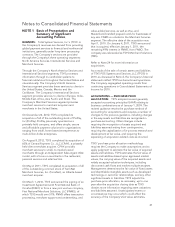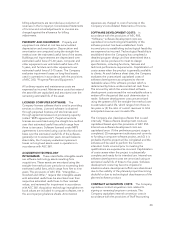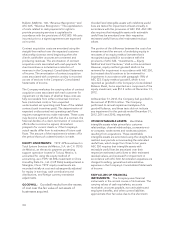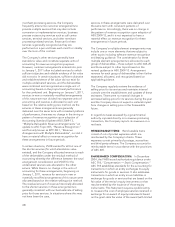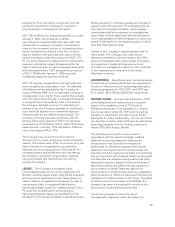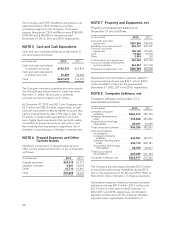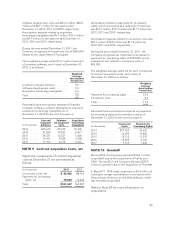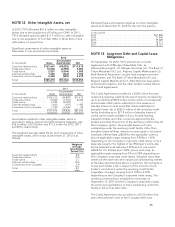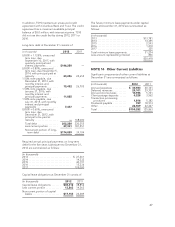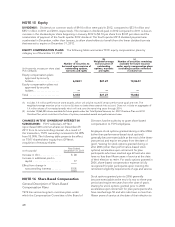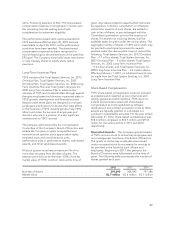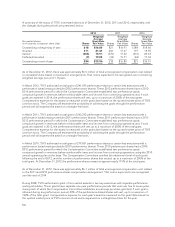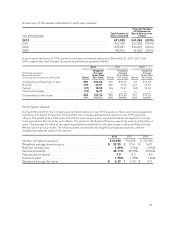NetSpend 2012 Annual Report Download - page 44
Download and view the complete annual report
Please find page 44 of the 2012 NetSpend annual report below. You can navigate through the pages in the report by either clicking on the pages listed below, or by using the keyword search tool below to find specific information within the annual report.
Level 2 — Observable inputs other than quoted
prices included in Level 1, such as quoted prices for
similar assets and liabilities in active markets, quoted
prices for identical or similar assets and liabilities in
markets that are not active, or other inputs that are
observable or can be corroborated by observable
market data.
Level 3 — Unobservable inputs for the asset or
liability.
Goodwill and certain intangible assets not subject to
amortization are assessed annually for impairment in
the second quarter of each year using fair value
measurement techniques. Specifically, goodwill
impairment is determined using a two-step test. The
first step of the goodwill impairment test is used to
identify potential impairment by comparing the fair
value of a reporting unit (RU) with its book value,
including goodwill. If the fair value of the RU exceeds
its book value, goodwill is considered not impaired
and the second step of the impairment test is
unnecessary. If the book value of the RU exceeds its
fair value, the second step of the goodwill
impairment test is performed to measure the amount
of impairment loss, if any. The second step of the
goodwill impairment test compares the implied fair
value of the RU’s goodwill with the book value of that
goodwill. If the book value of the RU’s goodwill
exceeds the implied fair value of that goodwill, an
impairment loss is recognized in an amount equal to
that excess. The fair value of the RU is allocated to all
of the assets and liabilities of that unit as if the RU
had been acquired in a business combination and the
fair value of the RU was the purchase price paid to
acquire the RU.
The estimate of fair value of the Company’s RUs is
determined using various valuation techniques,
including using an equally weighted combination of
the market approach and the income approach. The
market approach, which contains Level 2 inputs,
utilizes readily available market valuation multiples to
estimate fair value. The income approach is a
valuation technique that utilizes the discounted cash
flow (DCF) method, which includes Level 3 inputs.
Under the DCF method, the fair value of the RU
reflects the present value of the projected earnings
that will be generated by each RU after taking into
account the revenues and expenses associated with
the asset, the relative risk that the cash flows will
occur, the contribution of other assets, and an
appropriate discount rate to reflect the value of the
invested capital. Cash flows are estimated for future
periods based upon historical data and projections
by management.
At December 31, 2012, the Company had recorded
goodwill in the amount of $518.3 million. The
Company performed its annual impairment test of its
unamortized goodwill balance as of May 31, 2012,
and these tests did not indicate any impairment. The
fair value of the RUs substantially exceeds the
carrying value. Refer to Note 10 for more information
regarding goodwill.
At December 31, 2012, the fair value of the
Company’s private equity investment was $5.5 million
based on Level 3 inputs. Refer to Note 19 for more
information regarding this investment.
The fair value of the Company’s long-term debt and
obligations under capital leases is not significantly
different from its carrying value.
NOTE 4 Relationships with Affiliated
Companies
The Company provides electronic payment
processing and other services to the Company’s
equity investments, TSYS de México and CUP Data.
The foregoing related party services are performed
under contracts that are similar to its contracts with
unrelated third party customers. The Company
believes the terms and conditions of transactions
between the Company and these related parties are
comparable to those which could have been
obtained in transactions with unaffiliated parties.
Through its related party transactions, TSYS
generates accounts receivable and liability accounts
with TSYS de México and CUP Data. The Company
had an accounts receivable balance of $7,500 and
$9,700 associated with related parties at
December 31, 2012 and 2011, respectively. The
Company had an accounts payable balance of
$77,000 and $32,400 with related parties at
December 31, 2012 and 2011, respectively.
The table below details revenues derived from
affiliated companies for the years ended
December 31, 2012, 2011 and 2010:
(in thousands) 2012 2011 2010
Total revenues:
CUP Data ................. $172 136 130
TSYS de México ........... 72 62 51
Total revenues .............. $244 198 181
41


